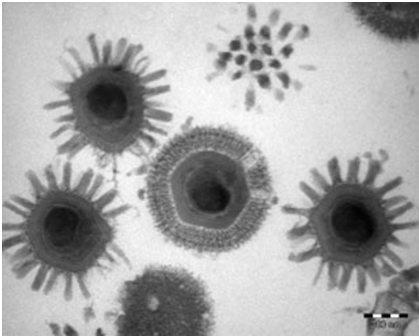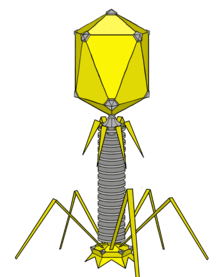WAYS IN WHICH VIRUSES DIFFER FROM OTHER LIVING CELLS
Viruses as differ tremendously from other unicellular microorganisms in several ways and these unique features of viruses are as follows:
- Viruses reproduce only in living cells. Thus, viruses are obligate intracellular parasites since they only reside and replicate within infected host cells.
- They lack cellular structure; and viruses generally have the ability to infect other forms of life including bacteria, Archaea, animals and plant cells. .
- Viruses lack functional organelles (e.g. ribosomes) for the synthesis of important cellular and metabolic molecules.
- Viruses have the ability to integrate their own genome (i.e. DNA or their RNA transcript) into the genome of their host cell.
- They have simple acellular organization that comprises mainly of a particular nucleic acid (DNA or RNA) and a protein coat.
- Viruses do not carry out binary fission or cell division the same way that the eukaryotic or prokaryotic cells do.
- Viruses lack a metabolic process or system of their own. Instead, they take advantage of the cellular and metabolic processes of their host cells to generate their own energy and thus carry out their metabolic functions.
- They are not inhibited or killed by antibiotics. But viruses can be affected by interferons. Interferons are proteinous substances produced by host cells especially in response to a viral invasion or infection; and they generally help to limit the spread of the virus in the host’s body.
- Viruses are per se the smallest forms of microorganisms and they usually range from 20 – 300 nm or 350 nm in size. And thus viruses cannot be seen with the light microscope (whose resolving power is about 300 nm) but only with the aid of the electron microscope. Due to their relatively small sizes; viruses or virions are measured in nanometers (nm). Parvoviruses are among the smallest viruses (about 20 nm in size) while the largest viral family have a size of about 300-350 nm (e.g. smallpox virus). The largest known virus is mimivirus (Figure 1).

References
Acheson N.H (2011). Fundamentals of Molecular Virology. Second edition. John Wiley and Sons Limited, West Sussex, United Kingdom.
Alan J. Cann (2005). Principles of Molecular Virology. 4th edition. Elsevier Academic Press, Burlington, MA, USA.
Alberts B, Bray D, Johnson A, Lewis J, Raff M, Roberts K and Walter P (1998). Essential Cell Biology: An Introduction to the Molecular Biology of the Cell. Third edition. Garland Publishing Inc., New York.
Barrett J.T (1998). Microbiology and Immunology Concepts. Philadelphia, PA: Lippincott-Raven Publishers. USA.
Black, J.G. (2008). Microbiology: Principles and Explorations (7th ed.). Hoboken, NJ: J. Wiley & Sons.
Brian W.J Mahy and Mark H.C van Regenmortel (2010). Desk Encyclopedia of Human and Medical Virology. Elsevier Academic Press, San Diego, USA.
Brooks G.F., Butel J.S and Morse S.A (2004). Medical Microbiology, 23rd edition. McGraw Hill Publishers. USA.
Cann A.J (2011). Principles of Molecular Virology. Fifth edition. Academic Press, San Diego, United States.
Carter J and Saunders V (2013). Virology: Principles and Applications. Second edition. Wiley-Blackwell, New Jersey, United States.
Champoux J.J, Neidhardt F.C, Drew W.L and Plorde J.J (2004). Sherris Medical Microbiology: An Introduction to Infectious Diseases. 4th edition. McGraw Hill Companies Inc, USA.
Dimmock N (2015). Introduction to Modern Virology. Seventh edition. Wiley-Blackwell, New Jersey, United States.
Dimmock N.J, Easton A.J and Leppard K.N (2001). Introduction to modern virology. 5th edition. Blackwell Science publishers. Oxford, UK.
Discover more from #1 Microbiology Resource Hub
Subscribe to get the latest posts to your email.


